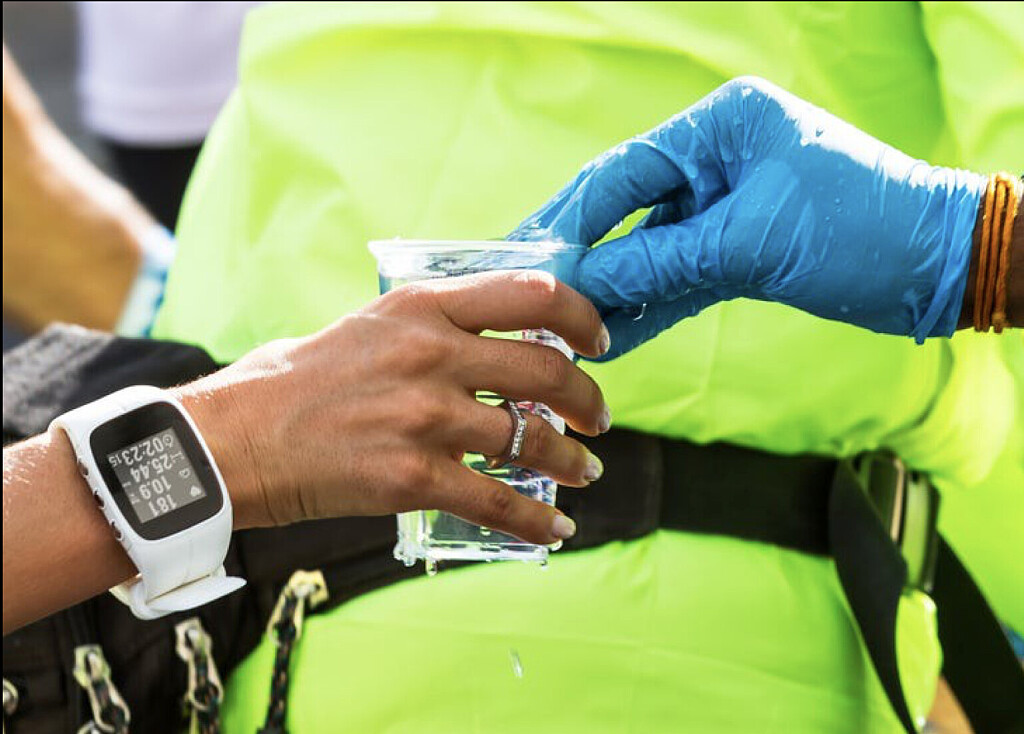Running News Daily
Running News Daily is edited by Bob Anderson. Send your news items to bob@mybestruns.com Advertising opportunities available. Train the Kenyan Way at KATA Kenya and Portugal owned and operated by Bob Anderson. Be sure to catch our movie A Long Run the movie KATA Running Camps and KATA Potato Farms - 31 now open in Kenya! https://kata.ke/
Index to Daily Posts · Sign Up For Updates · Run The World Feed
The 3 Keys To Race Day Fueling
To begin nailing your race fueling, it is important to understand the mechanisms behind it so that you can cover your bases. Many runners go directly to calories as being the cause for all of their issues, but unfortunately it is more complicated than that. Fueling properly requires a delicate balance of three keys: fluids, electrolytes, and calories. If one of these gets knocked out of balance by too little or too much intake (or the wrong source), disaster can ensue.
1. Get in those calories

Calories=energy. Your body has about 1,800-2,000 calories of carbohydrates stored as glycogen in the muscles and liver (think of this as your gas tank). Once this tank is emptied, if you aren't taking in calories from outside sources, your body is solely relying on fat and muscle for energy production. These systems can and will be utilized for energy production, but the process will be slower, leaving you to bonk, and can lead to serious health risks, such as heartbeat irregularities and rhabdomyolysis (kidney damage).
When setting up a target calorie intake for yourself, 200-300 calories per hour is often a good, general starting point for most runners. Smaller-framed runners may be able to start on the lower end of this recommended intake, while larger-framed runners could start on the upper end.
When considering calorie sources, carbohydrates are still king for energy production for endurance runners. Even if your pace is slower, carbohydrates are going to provide an efficient energy source that will keep you alert and able to push hills and maintain pace.
Aim for mostly carbohydrate rich calorie sources with a bit of protein and some fat mixed in is a good starting point. Calorie sources for running events can come from a combination of hydration mix, whole foods, gels, and chews. Figuring out what works best for you is where science meets art.
Some runners like the convenience of getting calories from hydration mix, while others prefer just water and electrolytes, getting their calories from whole food sources. Gels provide a quick source of energy that may be preferred for shorter events, while some runners have stomachs that can't handle them. Take it from an expert: there is no one best way to fuel, and chances are the first thing you try might not be the best option. It takes time and testing to figure out what works for you.
2. Take in electrolytes
Electrolytes are key in nutrient utilization, fluid balance and muscle contraction. While all electrolytes including sodium, potassium, calcium, chloride, and magnesium play a role for these processes to occur in the body, focus on sodium intake, since it is lost fastest through sweat. Sodium also helps fluid balance and sugar transport across the small intestine, which prevents cramping, bloating, and bonking.
Diving a little bit deeper, sodium itself allows for glucose (sugar) utilization because it acts like a key, allowing for a sugar transporter in the small intestine (GLUT4) to open. Without proper replenishment of sodium from outside fueling sources, there is a risk of not having glucose transporters open quickly enough and a concentration gradient difference to form between the inside of the small intestine and the blood plasma. When this occurs, water flows into the small intestine and can result in gas, bloating, diarrhea, and stomach cramping.
A good starting place for most runners is 250-500mg of intake per hour. Athletes with a low sweat rate (more on that later) can stick to the low end, and sweatier folks or runners racing at altitude or in the heat should aim for the higher end. Salt tabs, hydration mixes or food can provide a solid dose of sodium.
3. Hydrate, hydrate, hydrate.
While race location, climate, and sweat rate will ultimately determine fluid needs, the main thing that needs to be considered is that for some runners, it is quite difficult to actually replace all fluids lost through sweat in a race during a race. Ideally, we want to minimize fluid losses to no more than 2-3% loss of body weight in fluids, the point where we start to see performance impacts such as fatigue, cramping, and gastrointestinal distress due to dehydration. A good starting point for most runners with no information on their sweat rate is 16-20 ounces of fluid intake per hour. If this fluid intake causes a sloshing stomach, it may be too much, in which case, target amounts per hour should be reduced.
If GI Issues Persist
It can sometimes be complicated figuring out what might be causing your fueling issues (nausea, swelling, fatigue, cramping, gastrointestinal distress), and if you find yourself lost without an answer, it might be time to work with a sports dietitian or doctor that can help you more closely dial in the details.
For runners wanting to dial in their sweat rate and sodium losses a bit more precisely, at home or in person sweat tests can be useful.
While nothing is guaranteed on race day, putting together and practicing an individualized fueling plan ahead of time can increase the odds that you will successfully complete your event sans nutrition related issues.
by Trail Runner Magazine
Login to leave a comment




